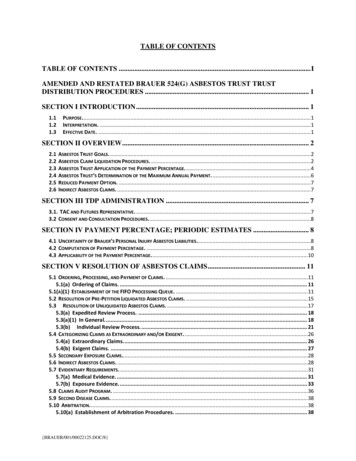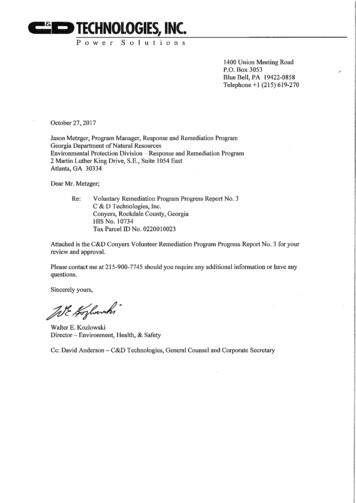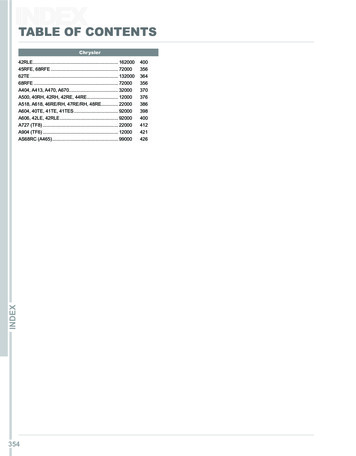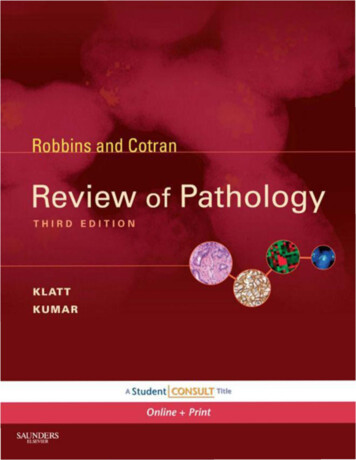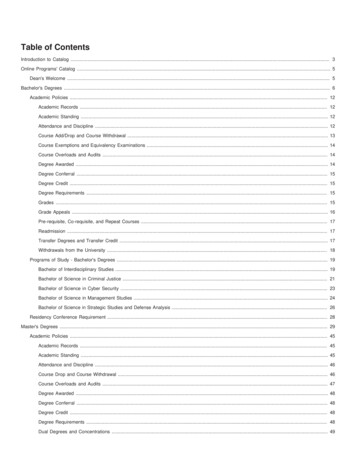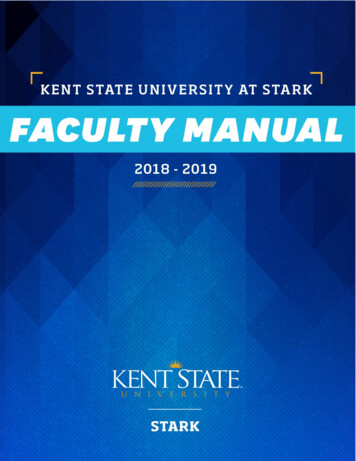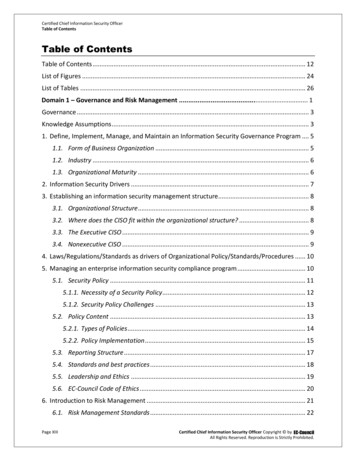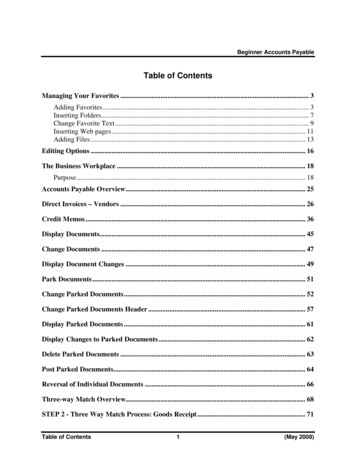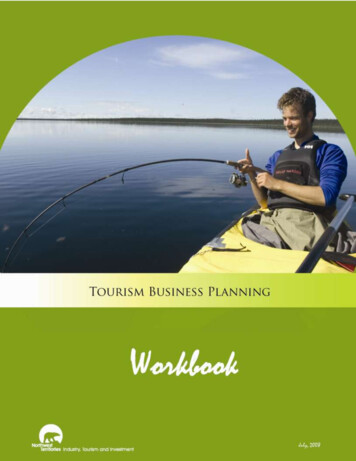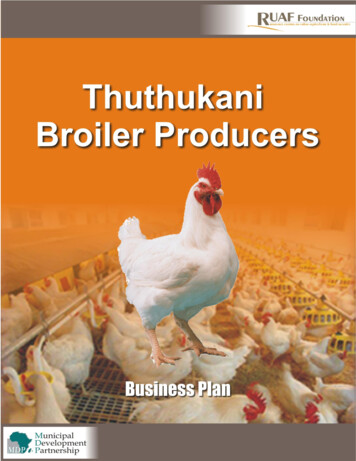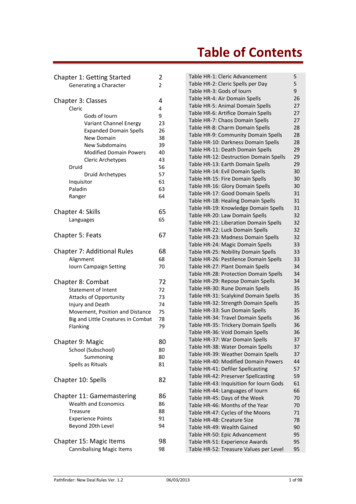
Transcription
Table of ContentsChapter 1: Getting StartedGenerating a CharacterChapter 3: ClassesClericGods of IournVariant Channel EnergyExpanded Domain SpellsNew DomainNew SubdomainsModified Domain PowersCleric ArchetypesDruidDruid ArchetypesInquisitorPaladinRangerChapter 4: ter 5: Feats67Chapter 7: Additional Rules68AlignmentIourn Campaign SettingChapter 8: CombatStatement of IntentAttacks of OpportunityInjury and DeathMovement, Position and DistanceBig and Little Creatures in CombatFlankingChapter 9: MagicSchool (Subschool)SummoningSpells as RitualsChapter 10: Spells6870727273747578798080808182Chapter 11: Gamemastering86Wealth and EconomicsTreasureExperience PointsBeyond 20th Level86889194Chapter 15: Magic ItemsCannibalising Magic ItemsPathfinder: New Deal Rules Ver. 1.29898Table HR-1: Cleric AdvancementTable HR-2: Cleric Spells per DayTable HR-3: Gods of IournTable HR-4: Air Domain SpellsTable HR-5: Animal Domain SpellsTable HR-6: Artifice Domain SpellsTable HR-7: Chaos Domain SpellsTable HR-8: Charm Domain SpellsTable HR-9: Community Domain SpellsTable HR-10: Darkness Domain SpellsTable HR-11: Death Domain SpellsTable HR-12: Destruction Domain SpellsTable HR-13: Earth Domain SpellsTable HR-14: Evil Domain SpellsTable HR-15: Fire Domain SpellsTable HR-16: Glory Domain SpellsTable HR-17: Good Domain SpellsTable HR-18: Healing Domain SpellsTable HR-19: Knowledge Domain SpellsTable HR-20: Law Domain SpellsTable HR-21: Liberation Domain SpellsTable HR-22: Luck Domain SpellsTable HR-23: Madness Domain SpellsTable HR-24: Magic Domain SpellsTable HR-25: Nobility Domain SpellsTable HR-26: Pestilence Domain SpellsTable HR-27: Plant Domain SpellsTable HR-28: Protection Domain SpellsTable HR-29: Repose Domain SpellsTable HR-30: Rune Domain SpellsTable HR-31: Scalykind Domain SpellsTable HR-32: Strength Domain SpellsTable HR-33: Sun Domain SpellsTable HR-34: Travel Domain SpellsTable HR-35: Trickery Domain SpellsTable HR-36: Void Domain SpellsTable HR-37: War Domain SpellsTable HR-38: Water Domain SpellsTable HR-39: Weather Domain SpellsTable HR-40: Modified Domain PowersTable HR-41: Defiler SpellcastingTable HR-42: Preserver SpellcastingTable HR-43: Inquisition for Iourn GodsTable HR-44: Languages of IournTable HR-45: Days of the WeekTable HR-46: Months of the YearTable HR-47: Cycles of the MoonsTable HR-48: Creature SizeTable HR-49: Wealth GainedTable HR-50: Epic AdvancementTable HR-51: Experience AwardsTable HR-52: Treasure Values per 70707178909595951 of 98
Chapter 1: Getting StartedGenerating a CharacterReplace the "Generating a Character" section from Core Rules (2009) pp14-15 withthe following text:From the sly rogue to the stalwart paladin, the Pathfinder RPG allows you to makethe character you want to play. Once you have a general concept worked out, usethe following steps to bring your idea to life, recording the resulting information andstatistics on your Pathfinder RPG character sheet, which can be found at the back ofthis book and photocopied for your convenience.Step 1— Character Background: A character concept or background is the mostimportant aspect of your character. Have an idea of who the character is and wherethey came from before rolling dice. Some of the best character backgrounds fit inwith details in the campaign world, and help the GM to personalise the game foryou. Consider your characters friends, family, beliefs and goals. Give the GM someNPCs that he can use in later adventures and the game is all the richer for it.Step 2— Determine Ability Scores: Start by generating your character's ability scores(see page 15). These six scores determine your character's most basic attributes andare used to decide a wide variety of details and statistics. Some class selectionsrequire you to have better than average scores for some of your abilities. The Iourngame uses the Purchase method to determine ability scores, the budget is usually 15points. Note that your choice of race will also affect your starting ability scores.Step 3—Pick Your Race: Next, pick your character's race, noting any modifiers toyour ability scores and any other racial traits (see Chapter 2). There are seven basicraces to choose from, although your GM might have others to add to the list. Underthe house rules, your choice of race has no effect on the Languages you know.Step 4—Pick Your Class: A character's class represents a profession, such as fighteror wizard. If this is a new character, he starts at 1st level in his chosen class. As hegains experience points (XP) for defeating monsters overcoming challenges andcompleting story goals, he goes up in level, granting him new powers and abilities.Step 5—Choose Languages: Your character starts play knowing 2 Int Modifierspoken tongues or written scripts. These are chosen from the list of availablelanguages for Iourn and may or may not include racial languages for your character.Some languages may be unavailable depending on the campaign. For each rank yourcharacter takes in the Linguistics skill he can add one spoken tongue or one writtenscript to his repertoire of languages.Pathfinder: New Deal Rules Ver. 1.206/03/20132 of 98
Step 6—Pick Skills: Determine the number of skill ranks possessed by your character,based on his class and Intelligence modifier (and any other bonuses, such as thebonus received by humans). Then spend these ranks on skills, but remember thatyou cannot have more ranks than your level in any one skill (for a starting character,this is usually one). Each class has a number of favoured skills called Class Skills. Youget a 3 bonus on all class skills that you put ranks into, so consider these skills first.Step 7—Select Feats: Determine how many feats your character receives, based onhis class and level, and select them from those presented in Chapter 5.Step 8—Choose Traits: All characters have two special traits that reflect yourcharacter background. There is a selection of these on p326 of the Advanced Player'sGuide (2010); the online Pathfinder SRD collates legal traits from various sources.Traits should be seen as a means to build on the story of your character, and explainwhat he was doing before he became an adventurer. If no traits fit your character,then invent your own using the existing traits as a guide – but he sure to run thempast the GM first.Step 9—Determine Starting Hit Points: A level 1 character begins with maximum hitpoints for its Hit Die roll. To determine a hit points for levels beyond 1st, roll the diceindicated by its Hit Dice. Alternatively, starting at 2nd level, you can always choose totake the average die roll (rounded up) instead of rolling for hit points – i.e. 3 not 1d4,4 not 1d6, 5 not 1d8, 6 not d10, and 7 not 1d12. This decision must be made beforeyou roll your hit die. Creatures whose first Hit Die comes from an NPC class or fromhis race roll their first Hit Die normally, or take the average result rounded up.Step 10—Buy Equipment: Each new character begins the game with an amount ofgold, based on his class, that can be spent on a wide range of equipment and gear,from chainmail armour to leather backpacks. This gear helps your character survivewhile adventuring. In some cases the certain equipment. Magic items cannot bepurchased from starting wealth. At the discretion of the GM, based on the needs ofthe campaign, certain equipment may be provided freely.Step 11—Finishing Details: Finally, you need to determine the derived statistics ofyour character such as armour class (AC), saving throws, initiative modifier andattack values. Consult Chapter 7 of the Core Rules (2009) for additional rules. Therules for Alignment have been modified somewhat in the House Rules.Pathfinder: New Deal Rules Ver. 1.206/03/20133 of 98
Chapter 3: ClassesThe ClericThe following text replaces the information about the Cleric class from pp38-41 ofthe Core Rules (2009). The rules also supersede the definition of subdomainsoriginally presented in the Advanced Player's Guide (2010) pp86-97.In faith and the miracles of the divine, many find a greater purpose. Called to servepowers beyond most mortal understanding, all priests preach wonders and providefor the spiritual needs of their people. Clerics are more than mere priests, though;these emissaries of the divine work the will of their deities through strength of armsand the magic of their gods. Devoted to the tenets of the religions and philosophiesthat inspire them, these ecclesiastics quest to spread the knowledge and influence oftheir faith. Yet while they might share similar abilities, clerics prove as different fromone another as the divinities they serve, with some offering healing and redemption,others judging law and truth, and still others spreading conflict and corruption. Theways of the cleric are varied, yet all who tread these paths walk with the mightiest ofallies and bear the arms of the gods themselves.Role: More than capable of upholding the honour of their deities in battle, clericsoften prove stalwart and capable combatants. Their true strength lies in theircapability to draw upon the power of their deities, whether to increase their ownand their allies' prowess in battle, to vex their foes with divine magic, to lend healingto companions in need, or myriad other powers in keeping with their faith.Deity: All clerics must revere a specific deity. The choice of deity affects the cleric'sclass skills, the spells he casts, and may also re-flavour some of the cleric's classabilities. Players who wish divine spellcasting characters without the benefit ofreligious dogma should choose to play a Mystic instead.Alignment: There is no restriction on the alignment of a cleric, and no requirementthat cleric's alignment be within one step of her deity. However, clerics must stillabide by the tenets of their religion: something an evil cleric worshipping a gooddeity may not be able to maintain. Acting against the tenets of your religion is a codeof conduct violation (see ex-Clerics, below).Hit Die: d8Pathfinder: New Deal Rules Ver. 1.206/03/20134 of 98
Table HR-1: Cleric AdvancementLevel1stBase AttackBonus 0FortSave 2RefSave 0WillSave 6th17th18th19th20th 1 2 3 3 4 5 6/ 1 6/ 1 7/ 2 8/ 3 9/ 4 9/ 4 10/ 5 11/ 6/ 1 12/ 7/ 2 12/ 7/ 2 13/ 8/ 3 14/ 9/ 4 15/ 10/ 5 3 3 4 4 5 5 6 6 7 7 8 8 9 9 10 10 11 12 12 0 1 1 1 2 2 2 3 3 3 4 4 4 5 5 5 6 6 6 3 3 4 4 5 5 6 6 7 7 8 8 9 9 10 10 11 12 12SpecialAura, channel energy 1d6, domains, orisons,spontaneous castingChannel energy 2d6Channel energy 3d6Channel energy 4d6Channel energy 5d6Channel energy 6d6Channel energy 7d6Channel energy 8d6Channel energy 9d6Channel energy 10d6Table HR-2: Cleric spells per 1st23344455555555555555Pathfinder: New Deal Rules Ver. ---------------23455 of 98
Class SkillsThe cleric's class skills are Craft (Int), Diplomacy (Cha), Heal (Wis), Knowledge(religion) (Int), Linguistics (Int), Profession (Wis), Sense Motive (Wis), Spellcraft (Int),and five other skills depending on his faith. See Table HR-3: Gods of Iourn for detailsof these class skills.Skill ranks per level: 2 Int ModifierClass FeaturesThe following are features of the cleric:Weapon and Armour Proficiency: Clerics are proficient with all simple weapons,light armour, medium armour, and shields (except tower shields). Clerics are alsoproficient with the favoured weapon of their deity.Aura (Ex): A cleric of a chaotic, evil, good, or lawful deity has a particularly powerfulaura corresponding to the deity's alignment (see the detect evil spell for details). Thisaura may not reflect the cleric's own alignment.Spells: A cleric casts divine spells which are drawn from the cleric spell list presentedin the Spell Lists section, and the bonus spells granted from any of her Domains. Acleric must choose and prepare her spells in advance.To prepare or cast a spell, a cleric must have a Wisdom score equal to at least 10 the spell level. The Difficulty Class for a saving throw against a cleric's spell is 10 thespell level the cleric's Wisdom modifier.Like other spellcasters, a cleric can cast only a certain number of spells of each spelllevel per day. Her base daily spell allotment is given on Table HR-2: Cleric spells perday. In addition, she receives bonus spells per day if she has a high Wisdom score.A cleric may know any number of spells, but must choose which to prepare each day.Clerics meditate or pray for their spells. The faith of each cleric prescribes a timeeach day when she must spend 1 hour in quiet contemplation or supplication toprepare her daily allotment of spells.A cleric begins play knowing all 0-level spells from her domain lists and the clericspell list (she can choose not to know spells of an opposed alignment); and three 1stlevel spells of her choice. The cleric also selects a number of additional 1st-levelspells equal to her Wisdom modifier. At each new cleric level, she gains two newspells of any spell level or levels that she can cast (based on her new cleric level). Thespells do not have to be written down, although some such spells are kept in writtenformat.Pathfinder: New Deal Rules Ver. 1.206/03/20136 of 98
The cleric can also add additional divine spells from either the cleric list or any of herdomains. These spells may be learned from scrolls or other written sources, ortaught by another cleric of the character's faith; alternatively the cleric could inventa new spell himself. The cleric follows the same rules as a wizard who addsad
Table HR-50: Epic Advancement 95 Table HR-51: Experience Awards 95 Table HR-52: Treasure Values per Level 95 . Pathfinder: New Deal Rules Ver. 1.2 06/03/2013 2 of 98 Chapter 1: Getting Started Generating a Character Replace the "Generating a Character" section from Core Rules (2009) pp14-15 with the following text: From the sly rogue to the stalwart paladin, the Pathfinder RPG allows you to .
